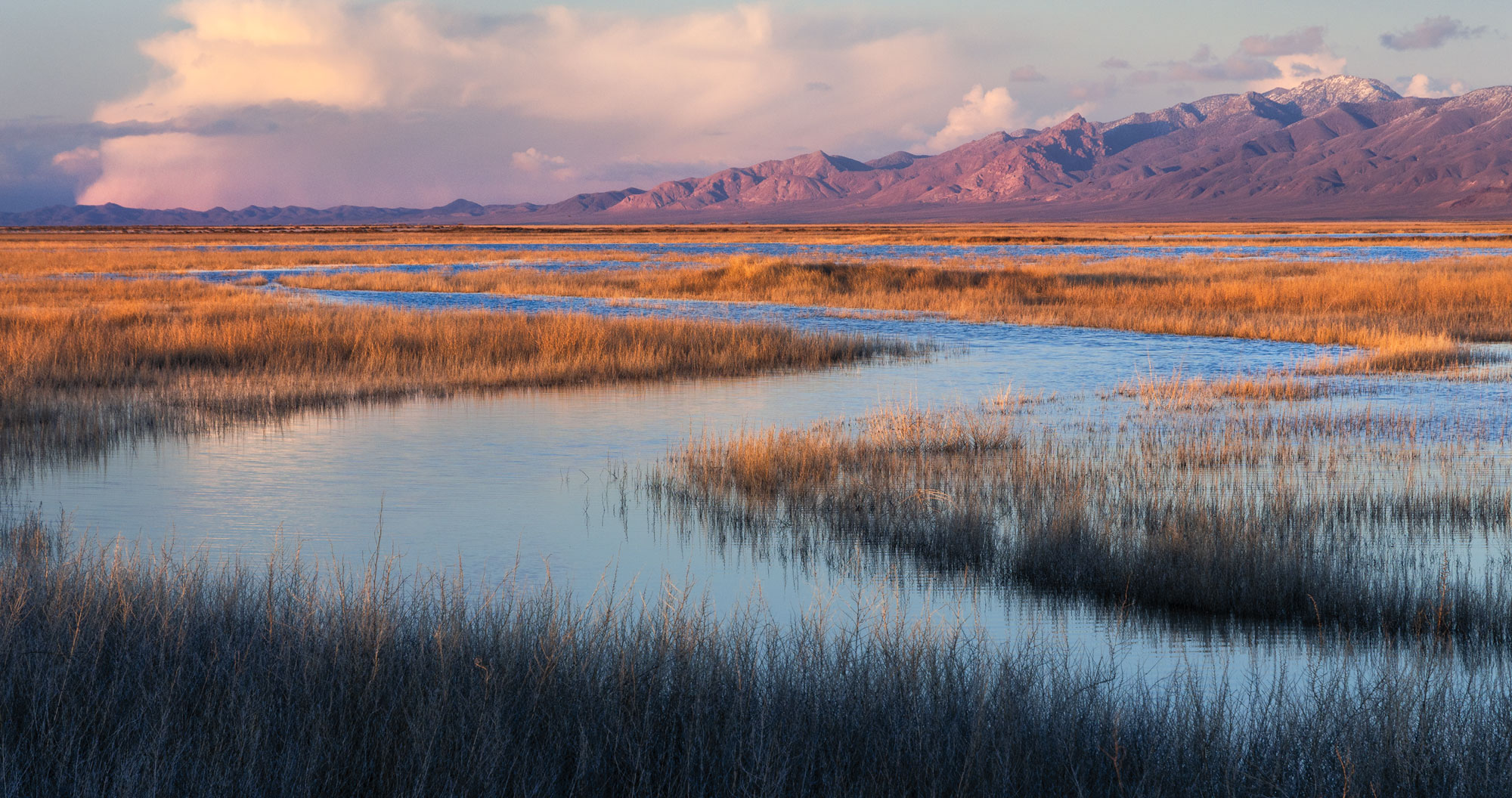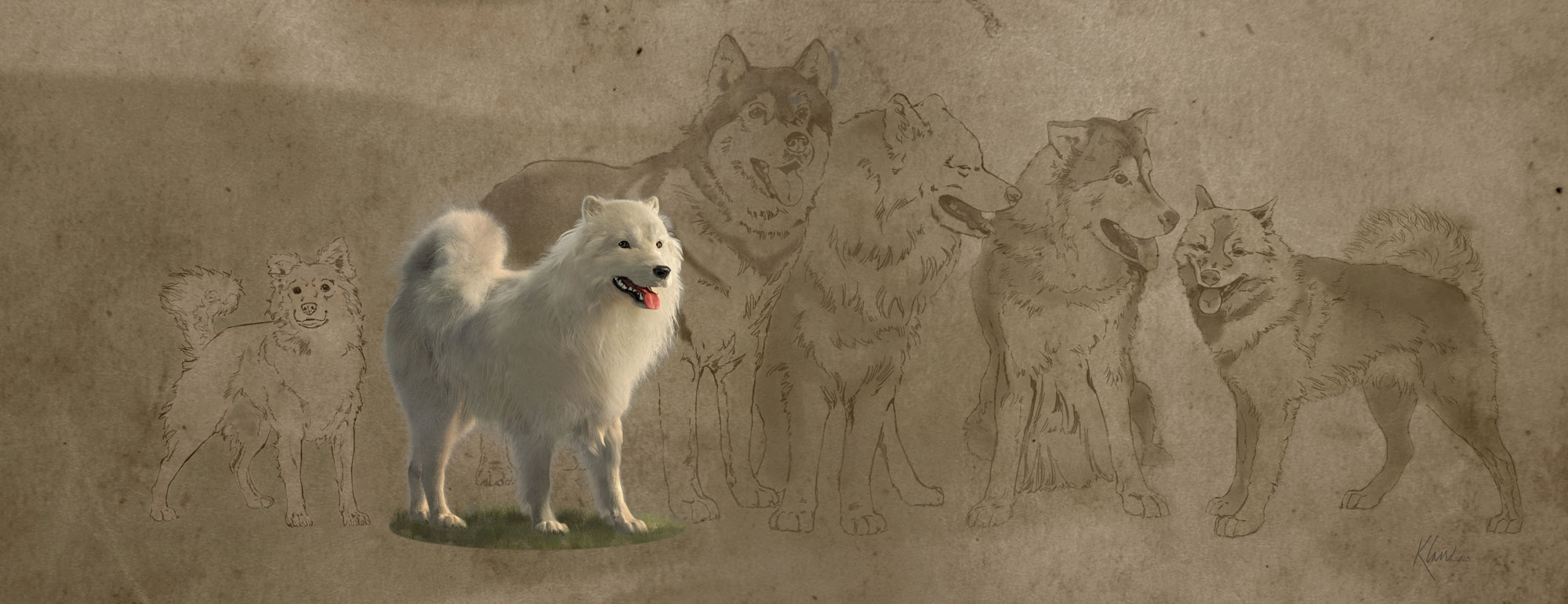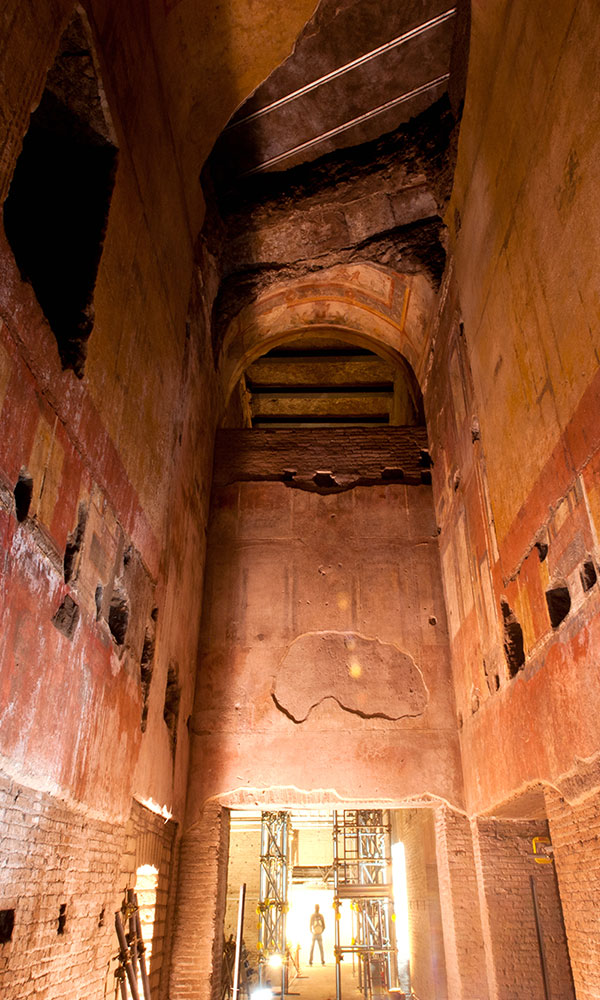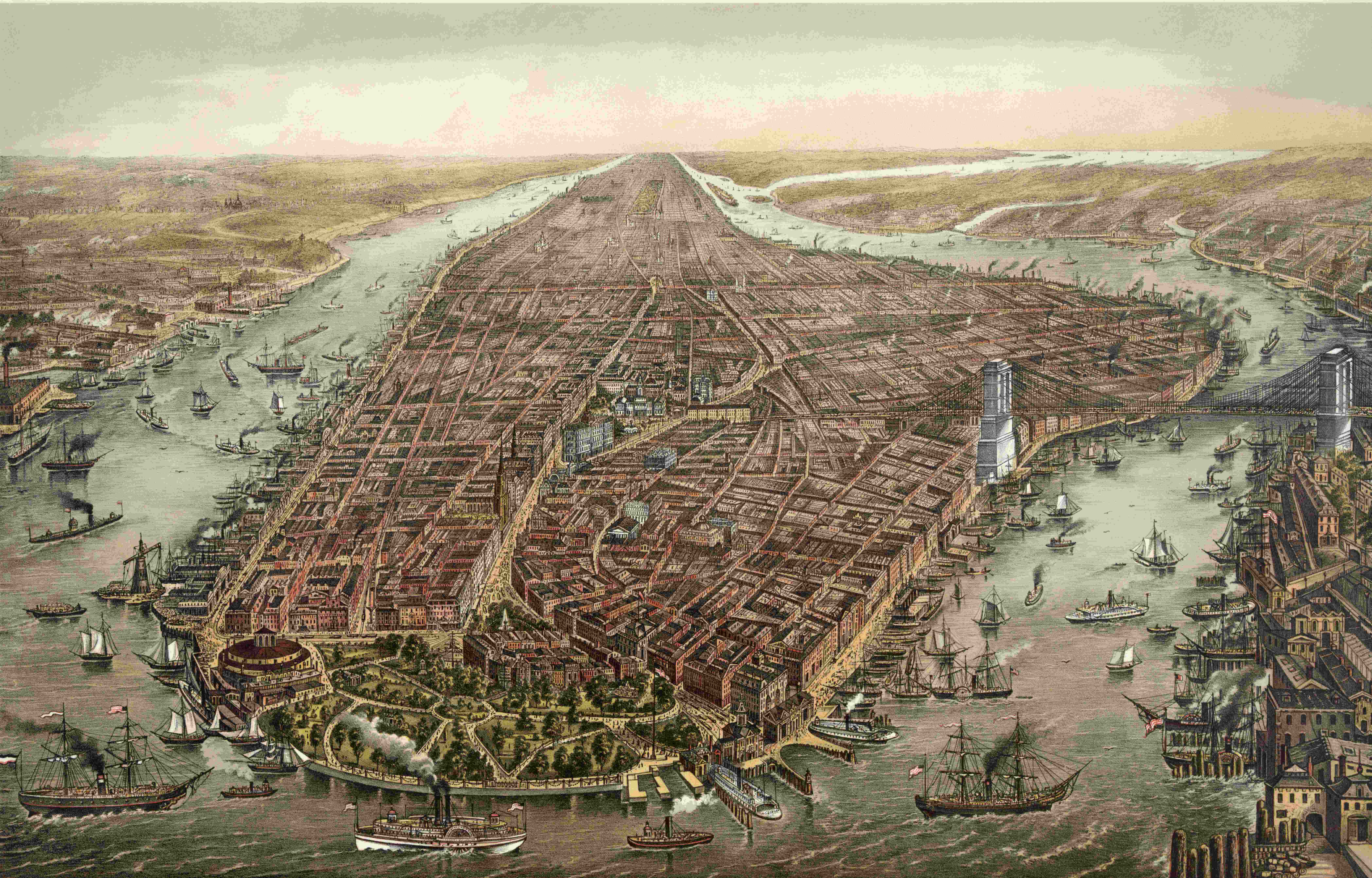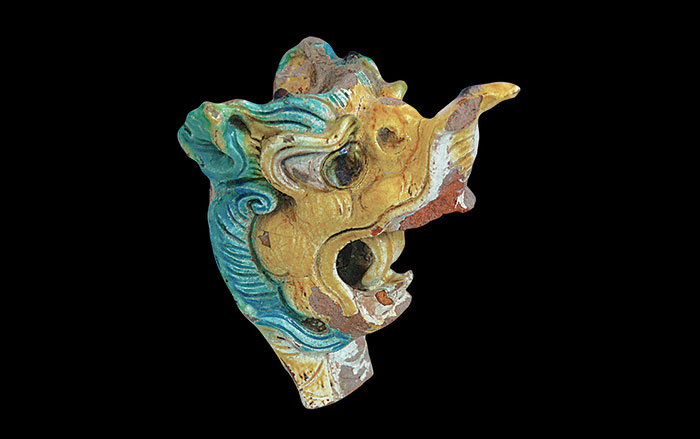
In recent years, Quinhagak, a small southwestern Alaskan village just inland from the Bering Sea, has, along with other coastal communities in the state, witnessed dramatic erosion due to climate change. The area, located at the southern end of the Yukon-Kuskokwim Delta, has historically been prone to damaging storms and flooding, but now, melting sea ice is resulting in larger waves and has left the shoreline more vulnerable to storm surges. Land once held firm by permafrost has softened and is now easily eaten away by the tides, with the result that anything previously embedded in the permafrost is released.
Around 2007, carved wooden objects started washing up on the beach near Quinhagak, and the source seemed to be a site several miles to the south known to have once been inhabited. The native Yup’ik people who live in the area generally believe in not disturbing their ancestors’ settlements, but they recognized that this was a special case. Artifacts of their past were in danger of being lost forever, and they believed that if these objects could be recovered, younger, culturally adrift members of the community might forge a deeper connection with their heritage. So they called in Rick Knecht, an archaeologist at the University of Aberdeen in Scotland, who has extensive experience excavating in Alaska, to examine the threatened site. “We landed there,” Knecht says, “and right away found a complete wooden doll on the beach. We followed the tide line and saw more and more evidence of wooden artifacts. A couple miles down the beach, we could see where they were coming from.” A dark midden partially concealed carved wooden shafts and half of a bentwood bowl. Knecht could tell that large chunks of earth had calved off, and big, grassy clumps could be seen on the beach with artifacts essentially pouring out of them.
The site has been dubbed Nunalleq, which means “Old Village” in the Yup’ik language. Since 2009, Knecht has led an excavation team there for up to six weeks each summer. He now recognizes that Nunalleq was occupied on and off between the fourteenth and seventeenth centuries, well before the first contact between the Yup’ik people and Russian traders, which took place in the 1830s. The archaeologists have found tens of thousands of artifacts—most made of wood or other organic materials, preserved only because they had been embedded in permafrost—that are providing a rare glimpse of precontact Yup’ik life. Hundreds of wooden dolls, from simple flat sticks to three-dimensional carvings, and a number of wooden masks, some large enough for use in a masked dancing ritual and some small enough that they appear to have been designed for use as playthings with the dolls, have been found. Carvings in wood and ivory of animals important to the Yup’ik people, such as seals and birds, have also been discovered. “On average, a person might find two hundred pieces a day,” says Knecht. “There’s so much information there.” Among the most striking finds has been evidence of a period of fierce internecine conflict that may have gone on for hundreds of years.
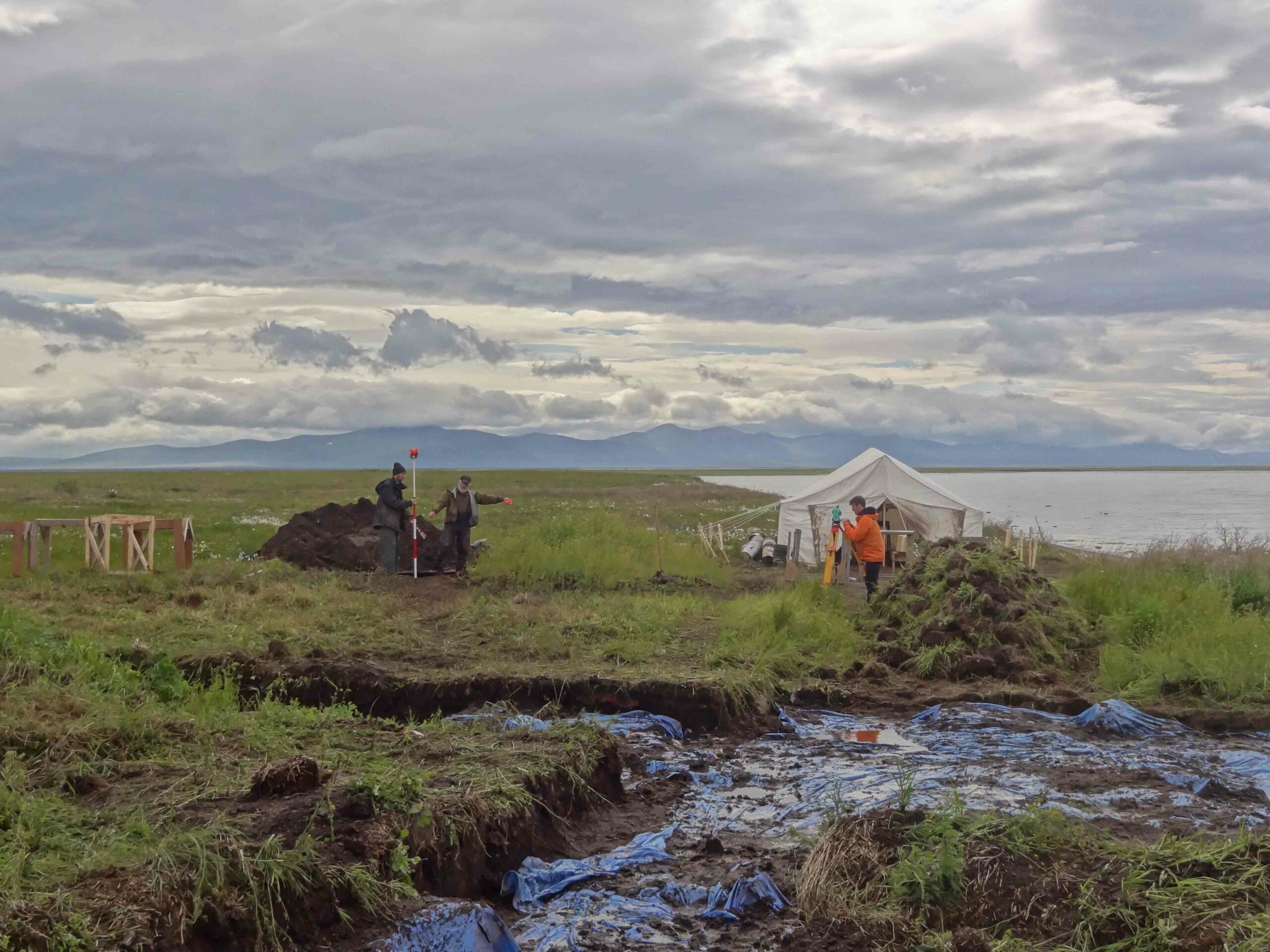
The Yup’ik people are related to the Inuit peoples who live in territories across Alaska, northern Canada, and Greenland, and share with them a common origin in Siberia and Asia. Archaeological evidence suggests that the ancestors of the Yup’ik had settled in inland areas of Alaska by 3,000 years ago and had established coastal villages by 600 years later, probably because they fished using nets, which allowed them to harvest large quantities of salmon on a predictable schedule. Seal and caribou were the other foundations of the Yup’ik diet, and food was plentiful enough that they could lead a more settled life than could the Inuit in other parts of the Arctic.
Historical accounts and stories from Yup’ik oral tradition suggest that the traditional Yup’ik village consisted of a qasgiq, where men and older boys lived, surrounded by a number of smaller ena, which housed women and boys younger than five. The qasgiq served as a workshop, where kayaks, hunting bows, and other tools were built and repaired, and as an instructional space, where elders shared oral traditions with the young and taught them how to hunt. It was also used as a community center, where gatherings and ritual events were held. Everyone lived in the village during the winter. At other times, some would venture out to camps where the fishing or hunting was particularly good.
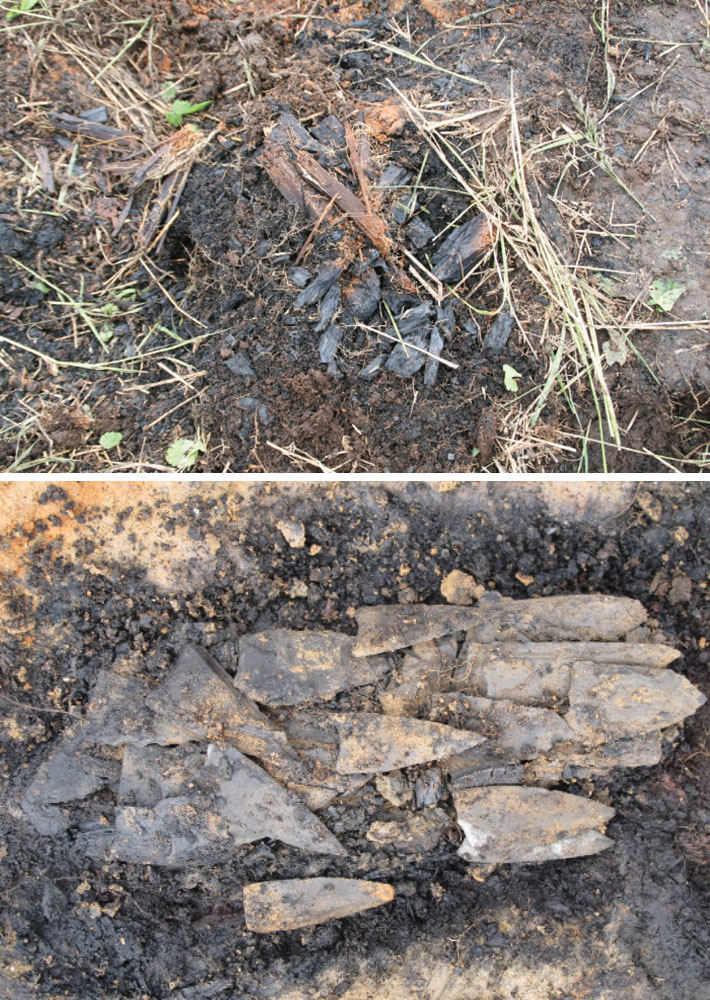
The site that Knecht and his team are excavating appears, based on carbon dating of organic material, to have been inhabited for some time around 1300 and then steadily from roughly 1450 through 1650. At the end of this period, the archaeologists have discovered, the site was the scene of a terrible massacre in which attackers set a qasgiq on fire with people and dogs still inside. “We found this burned floor with all this burned stuff on it, riddled with arrow points—absolutely riddled,” says Knecht. “We also found the bodies of people who were dragged out of the house, along with the long grass ropes that were used to do so. Their skeletons are burned and kind of dismembered.” Another human skeleton was found inside the house, with an arm outstretched, apparently attempting to dig out from under a sod wall. The displaced skull of a young woman was found with an arrow tip embedded in the back of it. Also discovered inside the house were the remains of a number of dogs that had perished in the fire. “We found this charred beam right across the middle of a dog,” says Knecht, “and it cooked him so fast, so intensely, that he was pretty well preserved.”
The evidence discovered at Nunalleq fits strikingly well with an episode in Yup’ik oral tradition that describes a time of epic intervillage battles known as the Bow and Arrow Wars. In the story, “the village was destroyed by a war party,” says Ann Fienup-Riordan, a cultural anthropologist who has studied and worked with the Yup’ik people for 40 years. “Their men were out, and there was an encounter. They were put to rout during a battle, and then the winning warriors came down, surrounded the village, burned it down, and killed everybody there, including, in one version, their dogs.” The defeated village in the story is described as being set alongside the Arolik River. The mouth of a river with this name—known for its salmon—is several miles from the excavation site today, but its course is thought to have been much closer when the site was inhabited. Arolik is derived from the Yup’ik word for “ashes,” and Knecht believes the river was named for the massacre that took place alongside it.
The Bow and Arrow Wars came to an end when the Russians arrived in the 1830s, according to Yup’ik oral tradition. The massacre documented by the Nunalleq excavation establishes that warfare was taking place around 1650, nearly 200 years before this encounter, and Fienup-Riordan believes it raged for 300 to 500 years in all. The archaeologists have found evidence that this sustained state of war was so traumatic that it led the residents of Nunalleq to alter the traditional layout of their village. “As the wars heated up,” says Knecht, “they actually took the men’s house and divided it up into apartments so everyone was living in one big building, creating a more fortified setting. It had to be really extreme warfare to actually change your architecture in response to it.”

According to Fienup-Riordan, revenge is the reason typically given in stories for attacks during the Bow and Arrow Wars. Knecht, however, suggests that widespread resource shortages may have set the stage for strife. Just as climate change is taking a serious toll on the Yukon-Kuskokwim Delta today, a period of global cooling known as the Little Ice Age put the area under pressure from around 1400 through 1750, overlapping with most of the time when Nunalleq was inhabited. “We think that the Bow and Arrow Wars might be related to stresses on their subsistence menu due to the Little Ice Age, which hit pretty hard in Alaska,” says Knecht. “Some foods may have been harder to get, and the normal hunting areas may not have yielded enough meat, creating pressure to attack other areas and move into them.”
For the Yup’ik people who live in Quinhagak today, seeing the evidence of the massacre at the Nunalleq site—along with other remains of precontact life salvaged by the excavation—has been revelatory. “We had always heard about the Bow and Arrow Wars from my late grandfather—it was a whole eye-for-an-eye type of deal,” says Warren Jones, president of the Quinhagak village corporation, Qanirtuuq Inc., which owns the land containing the dig site and helped fund the excavation for several years before it received a large grant. “But the coolest thing,” says Jones, “was actually seeing the burned structure of the building, seeing arrowheads lodged in the poles. I can see what our elders were talking about when they were telling the story. It’s almost word for word.”
Although the Yup’ik language continues to be widely spoken in the Yukon-Kuskokwim Delta, and the Yup’ik people still hunt and gather much of their food, the passing on of oral traditions that Jones describes has grown more sporadic in recent decades. This is due in part to the fact that young people now spend their time going to school and playing video games rather than listening to their elders’ stories. But it is also the product of nearly 200 years of interactions with foreign traders, missionaries, and colonizers, all of whom had a dramatic impact on Yup’ik cultural practices.

With the arrival of Russian traders in the 1830s, notes Fienup-Riordan, came the first in a series of smallpox and influenza epidemics that ravaged the native Yup’ik population of the Yukon-Kuskowim Delta, which had previously stood at around 15,000. This may explain why the Bow and Arrow Wars are said to have ceased with the coming of the Russians. The Russian Orthodox Church established a presence in the area and introduced the basics of Christianity, but otherwise had relatively little effect on Yup’ik life. Moravian missionaries who arrived in the southern section of the Yukon-Kuskowim Delta in 1885, after the United States had purchased Alaska, set up a mission and grammar school in Quinhagak by 1903, and had a much greater impact. Tracing their origins to Moravia, in what is now the Czech Republic, the Moravians were among the earliest Protestant groups to break off from the Roman Catholic Church. Among the Yup’ik, they focused in particular on wiping out the traditional practice of masked dancing, which they described in their writings as “heathen rites” and tantamount to “idol worship.”
The Yup’ik masked dance ritual was called agayuyaraq, which means “way of requesting,” and was traditionally the last of a series of annual winter ceremonies. According to Fienup-Riordan, everyone from a given village, or sometimes multiple villages, would gather in the qasgiq to watch dancers perform with carved wooden masks that frequently depicted animals or part-human, part-animal beings. The dancers were believed to take on the spirits of the animals portrayed by the masks and would make the animals’ sounds as well as entreat them to offer themselves up to hunters in the coming year. Once used, the masks were typically burned, broken, or left out on the tundra to decay. Yup’ik masks were collected by late nineteenth- and early twentieth-century explorers, and their vivid expression of a non-European belief system served as an inspiration to artists such as the Surrealists. Intact masks from the precontact period are extremely rare. However, the archaeologists have found a number of complete masks at the Nunalleq site, the largest of which depicts a creature that is part human and part wolf. These masks may have been undamaged because they had not yet been used in an agayuyaraq when the village was burned to the ground. They may be the oldest complete Yup’ik masks in existence.

The Moravians were especially effective in suppressing masked dancing and other traditional Yup’ik practices because they enlisted native “helpers” to serve as the primary missionaries to the people. This had the effect of deeply embedding within Yup’ik communities the notion that their traditional religious practice was wrong and that all kinds of dancing were sinful. In addition, many community elders, who were the repositories of cultural knowledge, perished in successive waves of epidemics.
Since the 1960s, there has been a revival of dancing—usually without masks—in many Yup’ik communities, particularly those in the northern part of the Yukon-Kuskokwim Delta, where Catholic missionaries took a more laissez-faire attitude toward native cultural practices. Until very recently, however, that had not been the case in Quinhagak, where the Moravian influence remained strong and there had been no traditional dancing for more than a hundred years.
The Nunalleq excavation has helped the Yup’ik people of Quinhagak reconnect with their heritage. A number of villagers have taken part in the dig, and native artists have been on hand to sketch artifacts fresh out of the ground and to carve replicas, often within a day. Even some young people have taken up carving. At the end of each season, the archaeologists put on a show-and-tell exhibition to present their discoveries. In discussions with younger members of the community, village elders have explained the purpose of selected artifacts. “When I see the elders recognize an object, and they’re telling the children something,” says Jones, the village corporation president, “it makes my hair raise on the back of my neck. It makes me feel really good.”

In part as a result of their experience with the dig, a group of children from Quinhagak petitioned the elders for and received permission to form a traditional dance group. And so, in 2013, a group of dancers from Quinhagak performed, without masks, first at a large, area-wide dance festival in the town of Bethel, 70 miles to the north, and then during the annual artifact show-and-tell exhibition in Quinhagak. “They were welcoming the pieces back,” says Knecht. “That was the first time there had been traditional dancing in Quinhagak in more than a century. It’s all part of this revival that is growing along with the finds.”
The first dance performed by the youth of Quinhagak was, tellingly, set to a song about a major storm that had hit the area a few years earlier and washed away a portion of the dig site. In the years since Knecht and his team began digging at Nunalleq, climate change has continued to take its toll, and the sea has, thus far, swallowed up almost 50 feet of the site. Fortunately, the ground was lost after it had been excavated, but a single bad storm could wipe out the rest overnight. Erosion and storms have caused problems in Quinhagak as well, destroying an airstrip and making it impossible at times for barges carrying heating oil and groceries to make landfall—major hardships for an area inaccessible by road. Plans are underway to move the village to more secure ground. “I check the weather every day and worry about what might happen to the site and the village,” says Knecht. “It keeps me up at night.” For as long as conditions allow, though, he’ll continue to work alongside the Yup’ik people to preserve what remains of their past.



